The World's Most Forested Countries
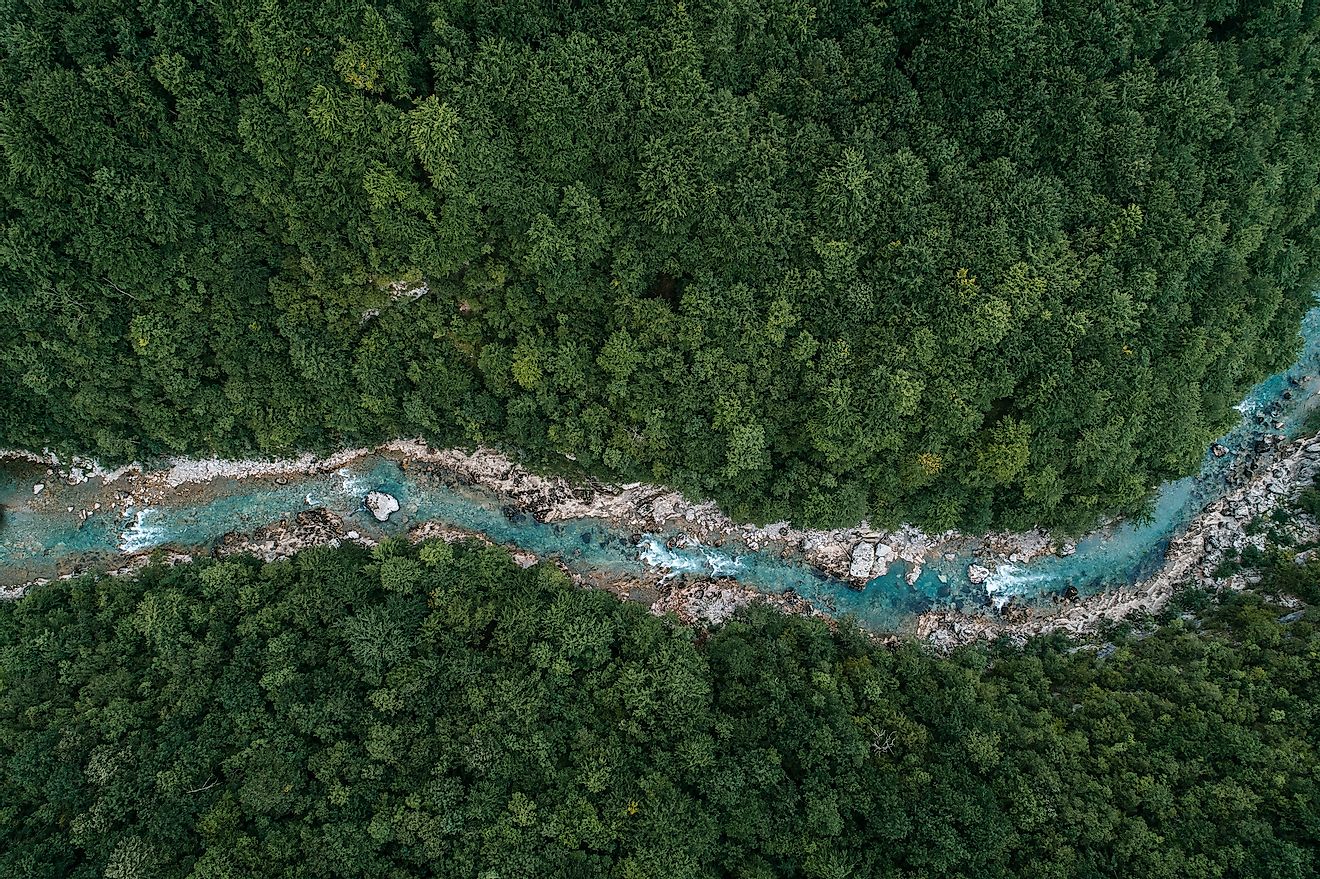
Forests play an important role in sustaining life on earth. They act as carbon sinks and help to regulate the climate on local and global scales. Forests also act as stores for excess water, and as such play a role as natural reservoirs and water purification plants. By mitigating the effects of flooding, they serve as natural storm-water management systems. Forests act as habitats for numerous species and as a store for genetic material for both plant and animal life.
Contents:
- Global Forest Cover
- 10 Countries With Highest Percentage Of Forest Cover
- Trends in Global Forest Cover by Country
- Changes in Forest Cover by Region
- Proactive Conservation Measures are the Most Effective
Global Forest Cover
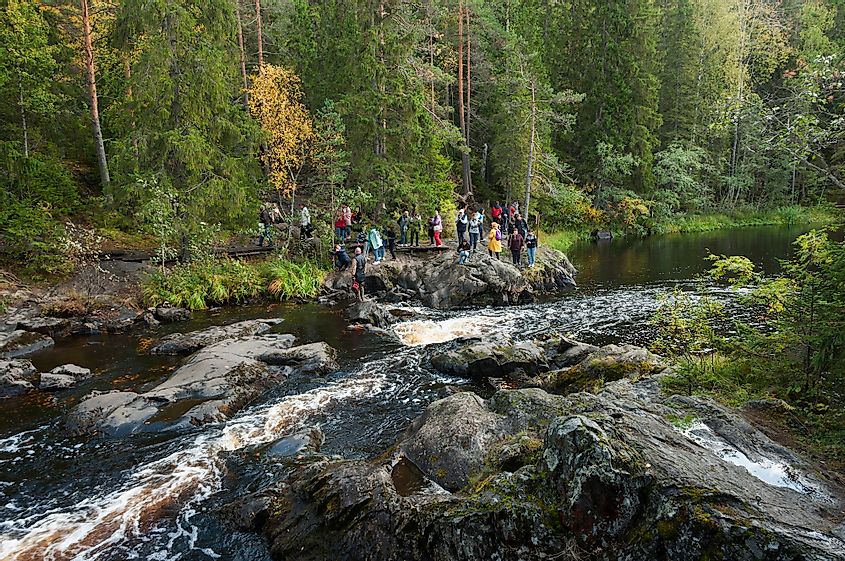
Approximately 31% of the earth's land is covered by forests. One-third of this forest area is primary forest or naturally regenerated forests where effects of human activitis is absent or minimal. The earth's forest cover is, however, unevenly distributed, with some countries having most of their land covered in forest while others have little or no forest cover at all.
Like many other ecosystems, forest ranges tend to disregard the geographical borders of countries. Europe has the highest forest cover of all continents, due in large part to the massive forests of the Russian Federation. As such, around a quarter of the earth's forests are found in Europe. South America, which holds the Amazon forest, has 21% of the planet's forest cover. North and Central America come in third, with around 18% of the world's forests, most of which are found in Canada and the U.S.
It is interesting to note that the ten most forest-rich countries account for two thirds of the world's forest cover, with the remaining 34% distributed among all the remaining countries. The Russian Federation alone has 20% of the world's forest cover, but would rank 53rd among the most forested countries in the world due to the large size of its total landmass. Please note that all numbers below come from World Bank data.
10 Countries With Highest Percentage Of Forest Cover
- Suriname - 98%
- Guyana - 94%
- Federated States of Micronesia - 92%
- Gabon - 91%
- Solomon Islands - 90%
- Palau - 90%
- Equatorial Guinea - 88%
- Liberia - 80%
- Papua New Guinea - 79%
- Finland - 74%
Trends in Global Forest Cover by Country
A. Forest Cover and Limited Human Activity
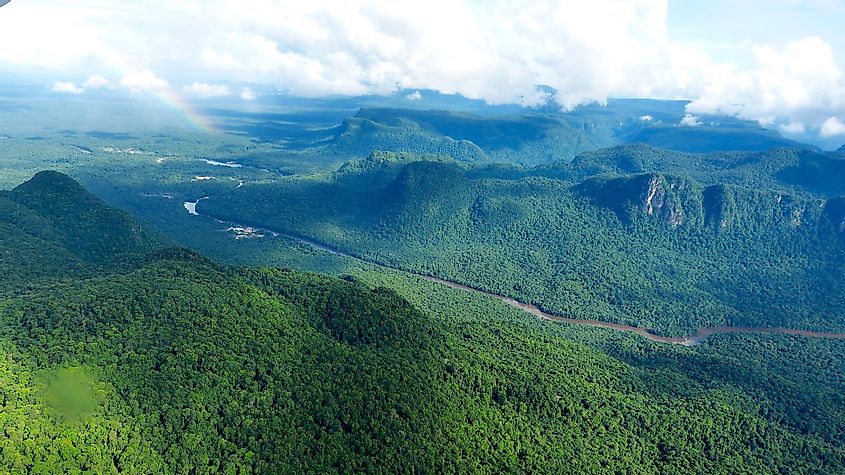
Countries characterized by pristine forest cover include Suriname, Guyana, and Micronesia, and Gabon which have more than 90% of their land areas dominated by forest cover. These countries are relatively small in terms of both surface areas and total populations. Large parts of these countries are mountainous, and the populations tend to be concentrated on the flatter, more navigable areas. This leaves forests in the impenetrable areas largely unaffected by sustained human activity.
Because of the small population of these countries, there are few demands made on these countries' natural resources. These nations also lack industrialized economies, and therefore have limited land degradation and resource exploitation.
B. Forest Cover Among Industrialized Countries
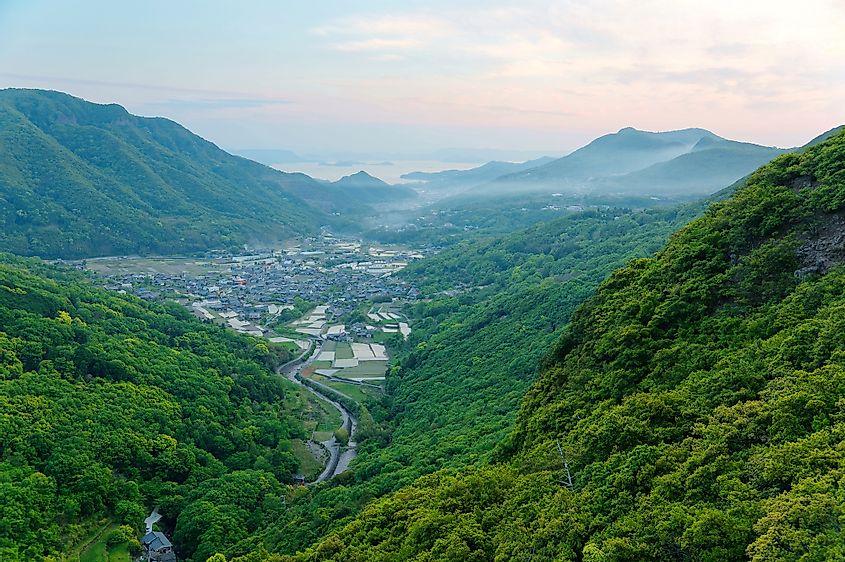
Finland, Sweden, Japan and South Korea are all industrialized countries with large populations with relatively extensive forest cover. Japan, for instance, serves as an interesting case study. 300 years ago, the rate of deforestation in Japan was at critical levels. However, human intervention has over time restored Japan's forest cover to its present rate of 68.47%. The Japanese began to use the resources from their forests in a more sustainable manner, and began to cultivate trees specifically for timber. This reduced the felling of trees in forests, allowing Japanese forests to regenerate. After World War 2, there was also a sustained reforestation effort to repair the damage to the forests resulting from the war. Japan's forest cover is currently stable, with little increase or decrease in forested areas in recent years.
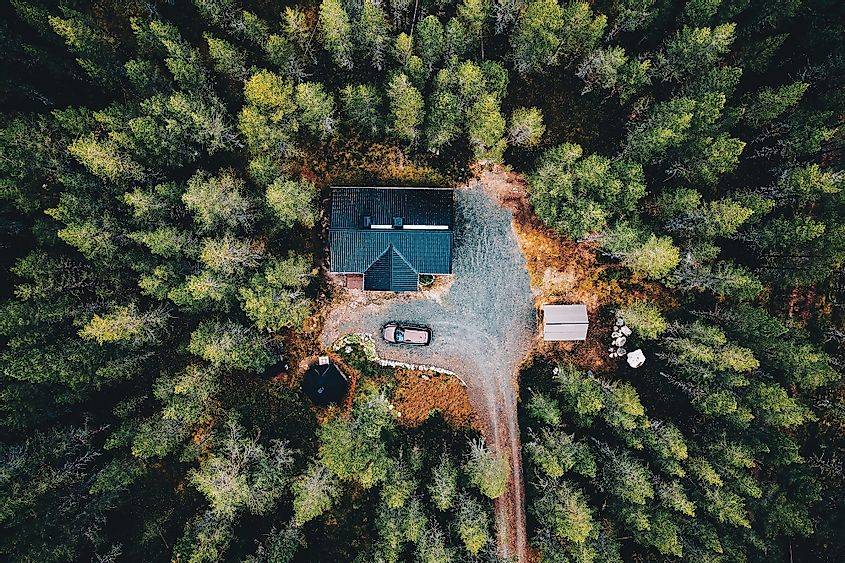
Finland and Sweden have high forest cover and thriving timber industries. Forestry is a major economic activity in both countries. Sweden's IKEA, for instance, is a world-renowned brand with many products made from Scandinavian timber. The population of these two Scandinavian countries is concentrated in urban areas. 85% of Swedes and Finns live in urban areas, leaving much of the rest of the land uninhabited. Much of this uninhabited land is forest. It interesting to note that ownership of forests in these northern countries differs significantly in comparison to what is seen in tropical countries. 50% of forests in Sweden are family-owned, 14% of Swedish forests are state-owned, and industrial enterprises own 25% of the forests there. In Finland, 61% of forests are privately owned, 30% are owned by the state, and the remaining 9% are owned by enterprises.
The forestry models of these two Scandinavian countries merge conservation and economics. These countries earn revenue from taxation of proceeds from the forestry industry, which can then be used for not only social welfare programs, but environmental welfare initiatives as well. As for conservation, more than 10% of the forests per country are conserved areas where no logging is allowed to occur. Scandinavian forestry in areas that aren't under conservation nonetheless tend to follow responsible protocols of reforestation, wherein the planting and harvesting trees in Sweden and Finland forms a continuous cycle. These two Scandinavian countries also invest in research to keep their timber industries and forestry policies ecologically sustainable.
Changes in Forest Cover by Region
Forest cover is constantly shifting in response to natural patterns and human activities alike. Increase of forest cover can occur naturally as forests expand their bounds onto previously bare land. It also happens as a result of afforestation (human activities planting trees to produce forests where they otherwise wouldn’t exist) as has been the case in Bahrain, Egypt, and Rwanda. Forest cover can also remain stable either by the natural process of regeneration or as a result of reforestation by humans following forestry activities.
Increase or stabilization of forest cover happens mostly in Europe and, to a lesser extent, in the Near and Far East. The trend in these regions somewhat mitigates the devastating effects of the deforestation still occurring in Central America, South America, and Africa.
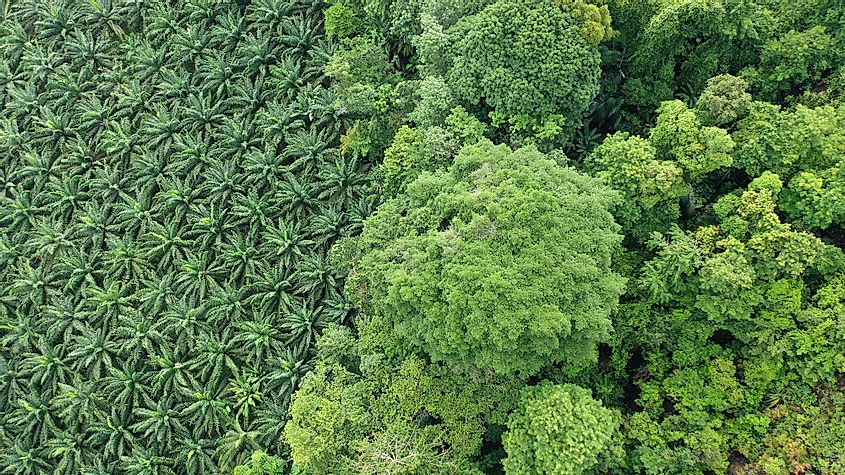
Forest areas decrease naturally when disasters such as wildfires and volcanic activity destroy forests. The most common cause of forest loss, however, is by far human activity. Deforestation is causing rapid loss of forests in Central America, the Amazon Basin, the Congo Basin, and near the West African coast.
Between 2000 and 2010, deforestation has decreased global forest cover by a startling 13 million hectares. Deforestation reduces the earth's carbon sinks, serving as catalyst for continued climate change. Reduced forest cover also leads to loss of water catchment areas, which in turn can causes worse floods in the rainy season, more severe droughts in the dry season, and soil erosion by water and wind alike at all times.
Proactive Conservation Measures are the Most Effective
With increased demand on the world's natural resources, active measures must be taken to ensure that resources, forests included, are used wisely. The sustainable use of forests has been proven viable, given coherent and comprehensive forestry practices are in place.
Countries By Percentage Of Forest Cover
| Rank | Country | Forest area (% of land area) |
|---|---|---|
| 1 | Suriname | 98 |
| 2 | Guyana | 94 |
| 3 | Micronesia, Fed. Sts. | 92 |
| 4 | Gabon | 91 |
| 5 | Solomon Islands | 90 |
| 6 | Palau | 90 |
| 7 | Equatorial Guinea | 88 |
| 8 | Liberia | 80 |
| 9 | Papua New Guinea | 79 |
| 10 | Finland | 74 |
| 11 | Seychelles | 73 |
| 12 | St. Vincent and the Grenadines | 73 |
| 13 | Laos | 72 |
| 14 | Brunei Darussalam | 72 |
| 15 | Bhutan | 71 |
| 16 | Guinea-Bissau | 71 |
| 17 | Sweden | 69 |
| 18 | Japan | 68 |
| 19 | South Korea | 65 |
| 20 | Congo, Rep. | 64 |
| 21 | Dominica | 64 |
| 22 | Timor-Leste | 62 |
| 23 | Slovenia | 62 |
| 24 | Fiji | 62 |
| 25 | Montenegro | 62 |
| 26 | Zambia | 61 |
| 27 | Brazil | 60 |
| 28 | Costa Rica | 59 |
| 29 | Malaysia | 59 |
| 30 | Samoa | 58 |
| 31 | Honduras | 57 |
| 32 | Panama | 57 |
| 33 | Belize | 57 |
| 34 | Peru | 57 |
| 35 | Congo, Dem. Rep. | 57 |
| 36 | Estonia | 56 |
| 37 | Sao Tome and Principe | 55 |
| 38 | Latvia | 55 |
| 39 | Jamaica | 54 |
| 40 | Angola | 54 |
| 41 | Colombia | 54 |
| 42 | Tanzania | 53 |
| 43 | Venezuela | 53 |
| 44 | Marshall Islands | 52 |
| 45 | Grenada | 52 |
| 46 | Bahamas, The | 51 |
| 47 | Ecuador | 51 |
| 48 | North Korea | 50 |
| 49 | Russia | 50 |
| 50 | Indonesia | 50 |
| 51 | Cambodia | 48 |
| 52 | Mozambique | 47 |
| 53 | Bolivia | 47 |
| 54 | Austria | 47 |
| 55 | Vietnam | 47 |
| 56 | Zimbabwe | 45 |
| 57 | Trinidad and Tobago | 45 |
| 58 | Myanmar | 45 |
| 59 | Dominican Republic | 44 |
| 60 | Cameroon | 43 |
| 61 | Belarus | 43 |
| 62 | Bosnia and Herzegovina | 43 |
| 63 | Senegal | 42 |
| 64 | St. Kitts and Nevis | 42 |
| 65 | Paraguay | 42 |
| 66 | Liechtenstein | 42 |
| 67 | Nepal | 42 |
| 68 | Georgia | 41 |
| 69 | Slovakia | 40 |
| 70 | North Macedonia | 40 |
| 71 | Thailand | 39 |
| 72 | Canada | 39 |
| 73 | New Zealand | 37 |
| 74 | Spain | 37 |
| 75 | Luxembourg | 37 |
| 76 | Vanuatu | 36 |
| 77 | Portugal | 36 |
| 78 | Central African Republic | 36 |
| 79 | Sierra Leone | 36 |
| 80 | Bulgaria | 36 |
| 81 | Lithuania | 35 |
| 82 | Ghana | 35 |
| 83 | Czech Republic | 35 |
| 84 | Sri Lanka | 34 |
| 85 | Croatia | 34 |
| 86 | St. Lucia | 34 |
| 87 | Andorra | 34 |
| 88 | Mexico | 34 |
| 89 | United States | 34 |
| 90 | Tuvalu | 33 |
| 91 | Norway | 33 |
| 92 | Guatemala | 33 |
| 93 | Germany | 33 |
| 94 | Switzerland | 32 |
| 95 | Italy | 32 |
| 96 | Cuba | 31 |
| 97 | France | 31 |
| 98 | Serbia | 31 |
| 99 | Poland | 31 |
| 100 | Greece | 30 |
| 101 | Romania | 30 |
| 102 | Nicaragua | 30 |
| 103 | Albania | 29 |
| 104 | Eswatini | 29 |
| 105 | Benin | 29 |
| 106 | El Salvador | 29 |
| 107 | Turkey | 29 |
| 108 | Botswana | 27 |
| 109 | Guinea | 26 |
| 110 | Gambia, The | 25 |
| 111 | Malawi | 25 |
| 112 | Chile | 24 |
| 113 | Nigeria | 24 |
| 114 | India | 24 |
| 115 | Philippines | 24 |
| 116 | Burkina Faso | 23 |
| 117 | China | 23 |
| 118 | Belgium | 23 |
| 119 | Hungary | 23 |
| 120 | Singapore | 23 |
| 121 | Togo | 22 |
| 122 | Madagascar | 21 |
| 123 | Mauritius | 19 |
| 124 | Antigua and Barbuda | 19 |
| 125 | Cyprus | 19 |
| 126 | Bermuda | 19 |
| 127 | Comoros | 18 |
| 128 | Australia | 17 |
| 129 | Ukraine | 17 |
| 130 | San Marino | 17 |
| 131 | Denmark | 16 |
| 132 | Ethiopia | 15 |
| 133 | Barbados | 15 |
| 134 | Bangladesh | 15 |
| 135 | South Africa | 14 |
| 136 | Lebanon | 14 |
| 137 | Azerbaijan | 13 |
| 138 | United Kingdom | 13 |
| 139 | Haiti | 13 |
| 140 | Morocco | 13 |
| 141 | Tonga | 12 |
| 142 | Uganda | 12 |
| 143 | Moldova | 12 |
| 144 | Armenia | 12 |
| 145 | Uruguay | 11 |
| 146 | South Sudan | 11 |
| 147 | Ireland | 11 |
| 148 | Cabo Verde | 11 |
| 149 | Rwanda | 11 |
| 150 | Netherlands | 11 |
| 151 | Mali | 11 |
| 152 | Burundi | 11 |
| 153 | Argentina | 11 |
| 154 | Eritrea | 11 |
| 155 | Sudan | 10 |
| 156 | Somalia | 10 |
| 157 | Cote d'Ivoire | 10 |
| 158 | Mongolia | 9 |
| 159 | Turkmenistan | 9 |
| 160 | Uzbekistan | 8 |
| 161 | Namibia | 8 |
| 162 | Kyrgyzstan | 7 |
| 163 | Iran | 7 |
| 164 | Israel | 7 |
| 165 | Kenya | 6 |
| 166 | Pakistan | 5 |
| 167 | Tunisia | 5 |
| 168 | United Arab Emirates | 5 |
| 169 | Chad | 4 |
| 170 | Tajikistan | 3 |
| 171 | Syria | 3 |
| 172 | Maldives | 3 |
| 173 | Iraq | 2 |
| 174 | Afghanistan | 2 |
| 175 | Palestine | 2 |
| 176 | Kiribati | 2 |
| 177 | Malta | 1 |
| 178 | Kazakhstan | 1 |
| 179 | Lesotho | 1 |
| 180 | Jordan | 1 |
| 181 | Yemen | 1 |
| 182 | Niger | 1 |
| 183 | Bahrain | 1 |
| 184 | Algeria | 1 |
| 185 | Iceland | 1 |
| 186 | Saudi Arabia | 1 |
| 187 | Kuwait | 0 |
| 188 | Mauritania | 0 |
| 189 | Djibouti | 0 |
| 190 | Libya | 0 |
| 191 | Egypt | 0 |
| 192 | Oman | 0 |
| 193 | Qatar | 0 |
| 194 | Nauru | 0 |
| 195 | Monaco | 0 |











